Theodore Lowe, Ap #867-859
Sit Rd, Azusa New York
Find us here
Parts of a Camera: Introduction of Camera to the Beginners

To be an expert in any subject, you need to know as much as possible about it. It is also true for photography. Understanding the fundamental components and operations of a camera is mandatory for maximum utilization and optimization of its capabilities.
A camera is only as good as its user!
This article will build your foundation on photography, enabling you to choose wisely when buying a camera.
1. Introduction of Cameras
Nowadays, technological advancements in cameras allow us to capture flawless photos of all our memories. Cameras offer a wide range of features and capabilities. The most important thing for these cameras is that they can take great pictures by themselves, without needing you to adjust any settings. If you're new to taking photos or videos, it's helpful to know the different kinds of cameras and their parts, but these special cameras can do most of the work for you!
1.1 Types of Camera
Cameras are available in various types, each designed for specific purposes and preferences. The main types include:
- Digital Cameras
- DSLR Cameras
- Mirrorless Cameras
- Compact Cameras
- Action Cameras
Each type has its unique features, benefits, and drawbacks, catering to different photography and videography needs.
1.2 Importance of Understanding Camera Parts
Understanding the parts of a camera is essential for capturing high-quality images and videos. It enables users to make informed decisions when selecting a camera and enhances their ability to manipulate settings for desired outcomes.
2. Camera Body
The section of the camera that contains all the internal parts is called the body. In essence, it describes everything that comes to mind when you consider a camera.
If you're a first-time buyer, be careful when purchasing used cameras!
Most professional photographers sell the camera body separately. This means you'll still need to buy a lens to actually take pictures.
2.1 Different Body Types
The camera body comes in various types, each designed for different needs and preferences. Here are some common camera body types:
- Compact Cameras:
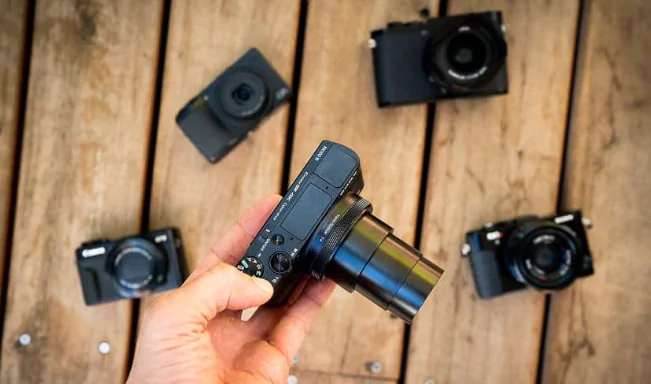
These small-sized cameras are a popular choice for beginners due to their simplicity and portability.
- DSLR (Digital Single-Lens Reflex) Cameras:
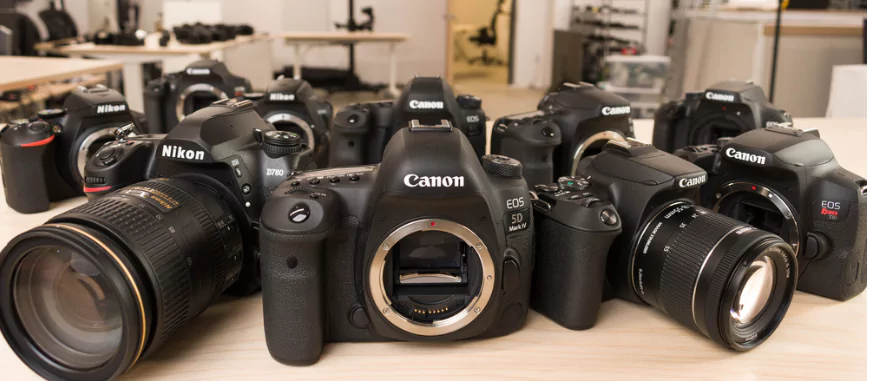
Professionals and photography enthusiasts favor DSLR cameras for providing more control over settings and interchangeable lenses.
- Mirrorless Cameras
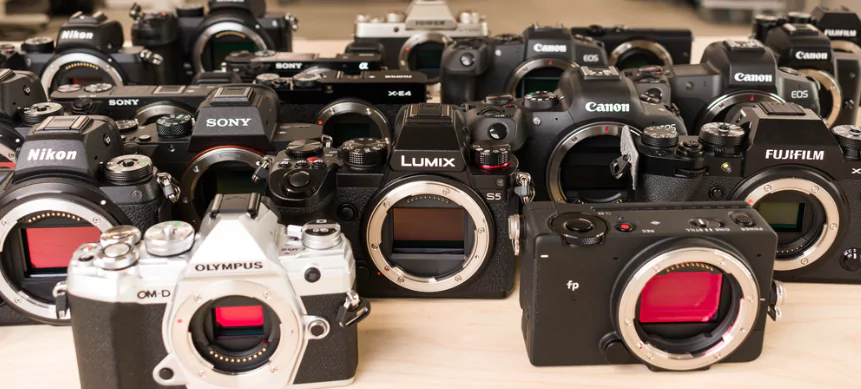
These cameras remove the mirror mechanism found in DSLRs, resulting in a smaller and lighter body without compromising image quality.
2.2 Controls and Buttons
A camera body is equipped with various controls and buttons, allowing photographers to adjust settings and capture the perfect shot. Here are some common controls and buttons you'll find on a camera:
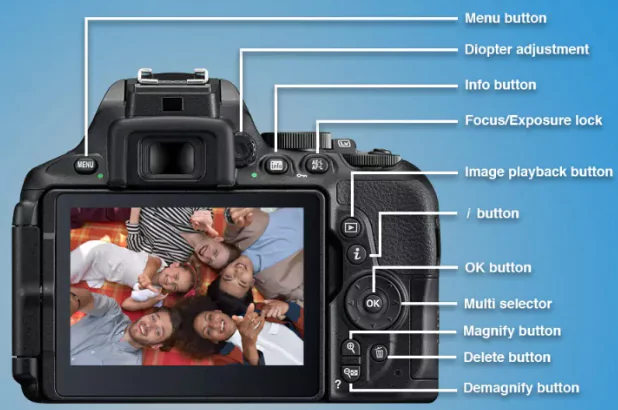

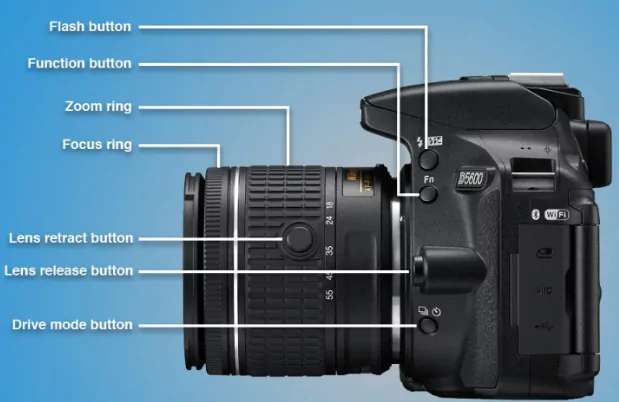
- Shutter Button: Pressing this button captures the image. It's usually located on the top or front of the camera body.
- Mode Dial: This dial lets you select different shooting modes, such as automatic, manual, aperture priority, or shutter priority.
- Exposure Compensation Button: This button allows you to override the camera's exposure settings when you need to adjust the brightness of your photos.
- Menu Button: This button provides access to various settings and options, allowing you to customize your camera's functions.
The camera body may also have additional controls and buttons for settings like ISO, white balance, autofocus, and more, depending on the camera model.
In conclusion, understanding the camera body and its different types, controls, and buttons is crucial for anyone interested in photography. It determines the functionality, versatility, and overall user experience of a camera.
3. Camera Lens
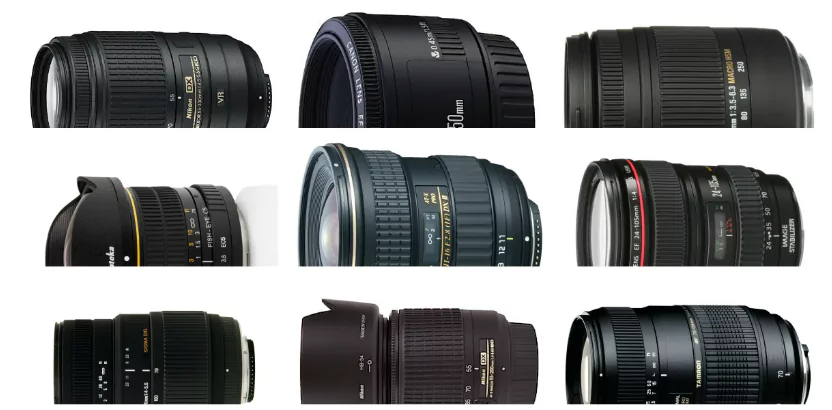
The camera lens is an essential part of a camera that focuses light onto the image sensor, resulting in clear and sharp photographs. Understanding camera lenses is crucial for beginners to capture high-quality shots with different perspectives and focal lengths.
A camera lens is a crucial part of any camera, responsible for capturing light and focusing it onto the camera's sensor. It plays a vital role in determining the quality and characteristics of the images you take. Understanding the different types of lenses and how they impact your photography is essential for beginners. In this section, we will explore the various types of lenses and delve into how focal length and aperture affect your photographs.
3.1 Types of Lenses
There are different types of lenses available for cameras, each with its unique features and purposes. Here's a breakdown of the most common types of lenses you might come across:
- Standard Lens: This lens provides a field of view similar to what human eyes see, making it ideal for everyday photography. It is commonly used for portraits, landscapes, and street photography.
- Wide-Angle Lens: As the name suggests, a wide-angle lens offers a wider field of view, making it perfect for capturing vast landscapes, architecture, and group shots. It can exaggerate perspective, creating a sense of depth and space in your photographs.
- Telephoto Lens: A telephoto lens has a longer focal length, allowing you to zoom in on distant subjects. It is commonly used for wildlife photography, sports events, and capturing details from a distance.
- Macro Lens: A macro lens enables you to take extreme close-up shots, capturing intricate details that are not visible to the naked eye. It is popular for photographing flowers, insects, and small objects.
- Zoom Lens: A zoom lens offers variable focal lengths, allowing you to zoom in and out without changing the lens. It provides versatility and convenience for a wide range of photography genres.
3.2 Focal Length and Aperture
Understanding focal length and aperture is crucial for getting the desired effect in your photographs.
- Focal Length: A lens's focal length determines its magnification power and field of view. It is measured in millimeters (mm). A shorter focal length (e.g., 18mm) provides a wider field of view, while a longer focal length (e.g., 200mm) offers a narrower field of view and more magnification.
- Aperture: The aperture is the opening in the lens that controls the amount of light entering the camera. It is denoted by an 'f-stop' value, such as f/2.8 or f/16. A larger aperture (smaller f-stop number) allows more light to enter and creates a shallow depth of field with blurred backgrounds. A smaller aperture (larger f-stop number) lets in less light and produces a larger depth of field, keeping more of the scene in focus.
Understanding how these two factors work together allows you to control the exposure and depth of field in your photos, giving you more creative control over your images. In conclusion, the camera lens is a vital component that greatly influences the outcome of your photographs. Being familiar with the different types of lenses available and understanding focal length and aperture empowers you to capture the perfect shot for any situation.
4. Camera Accessories
4.1 Tripods and Stabilizers
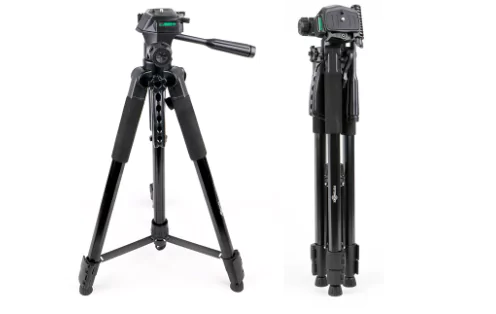
A tripod is an essential accessory for stable and steady shots, especially in low light or when using slow shutter speeds. It provides a solid base for the camera, reducing the risk of blurred images caused by camera shake. Stabilizers, on the other hand, are handy for capturing smooth and steady footage while on the move. They are particularly useful for videography, allowing for professional-looking, steady shots.
4.2 Filters and Lens Hoods
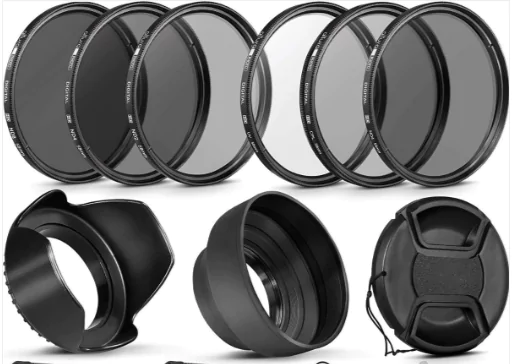
Filters and lens hoods are vital for enhancing the quality of your photographs. Filters can be used to adjust the light entering the lens, such as polarizing filters that reduce glare and improve color saturation. Lens hoods, on the other hand, help prevent unwanted light and glare from entering the lens, resulting in better image contrast and clarity.
5. Camera Settings
Understanding the various camera settings is crucial for capturing the perfect shot. In this section, we will discuss some of the fundamental settings that every beginner should know. By familiarizing yourself with these settings, you can take control of your camera and unlock its full potential. Let's dive into the world of camera settings!
5.1 ISO, Shutter Speed, and Aperture
ISO, shutter speed, and aperture are the three pillars of photography. They work together to determine the exposure, depth of field, and overall image quality. Let's break them down:
ISO
ISO refers to the sensitivity of your camera's image sensor to light. It determines how bright or dark your photos will turn out. A low ISO, such as ISO 100, is ideal for shooting in bright conditions, while a high ISO, like ISO 1600, is suitable for low-light situations. However, keep in mind that higher ISO values can introduce noise in your photos, so finding the right balance is crucial.
Shutter Speed
Shutter speed refers to the length of time that the camera's shutter remains open, allowing light to enter and expose the image sensor. It controls the amount of motion blur in your photos. A fast shutter speed, such as 1/1000th of a second, freezes action and is perfect for capturing sports or fast-moving subjects. On the other hand, a slow shutter speed, like 1/30th of a second, can create motion blur and is great for capturing flowing water or light trails.
Aperture
Aperture refers to the size of the lens opening, which determines the amount of light that enters the camera. It also controls the depth of field or how much of the scene is in focus. A smaller aperture, denoted by a higher f-number like f/16, results in a larger depth of field with more elements in focus. Conversely, a larger aperture, represented by a lower f-number like f/1.8, creates a shallow depth of field, blurring the background and drawing attention to the subject.
5.2 White Balance and Exposure Compensation
In addition to the three primary settings, other crucial camera settings directly impact your photos. Let's take a look at them:
White Balance
White balance refers to the adjustment of colors in a photo to ensure that whites appear white and other colors appear natural. Different lighting conditions can cast a color cast, making your photos appear too warm or too cool. Adjusting the white balance setting on your camera will help you achieve accurate and pleasing colors in different lighting situations, such as daylight, cloudy, or indoor lighting.
Exposure Compensation
Exposure compensation allows you to adjust the exposure level suggested by your camera's light meter. It comes in handy when you need to override the automatic settings and make your photos brighter or darker. Increase exposure compensation for bright scenes or decrease it for dark scenes to achieve the desired exposure. This setting gives you full control over the exposure of your photos, helping you achieve the desired creative effects.
By understanding and mastering these camera settings, you will gain greater control over your photography and be able to capture stunning images in any situation. Now that we've covered the basics let's put these settings into practice and unleash your creativity!
Conclusion
Understanding the different parts of a camera is essential for beginners to kick-start their photography journey. By familiarizing themselves with the lens, body, and controls, beginners can enhance their photography skills and create stunning images. With this knowledge, they can confidently explore the world of photography and capture extraordinary moments.
Related blog posts
Creating a Kid-Friendly Studio Setup: Ultimate Guide
Imagine capturing the pure joy and energy of children in your clothing photography. Sounds exciting, right?


